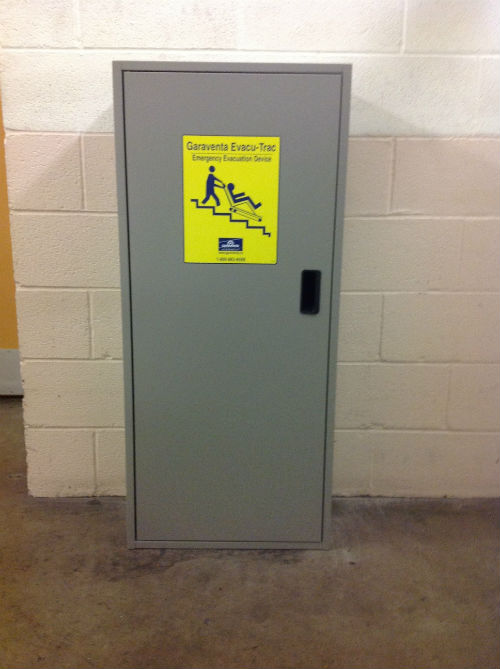Department of Health
Emergency Equipped
What would you do in the event of an emergency at your workplace?
This article is 12 years old. It was published on October 26, 2012.
September was National Preparedness Month. Hopefully, we have all undertaken the proper emergency procedures in our homes. However, have we been as diligent at our worksites? What would you do in the event of an emergency at your workplace? Do you know where you should meet in the event of a fire or a tornado? Do you know where all the emergency features are? Would you know how to assist a coworker who was having an emergency health crisis or needed assistance evacuating the building? Most areas have evacuation routes and meet-up locations well-documented.Some areas have even paired coworkers as safety partners. But are we as prepared as we could be?
The idea for this article came to me as I was walking up the stairs in the building at 1520 Market. When I got to the fourth floor, I noticed an interesting box on the stairwell wall (see photo).

My curiosity got the best of me, so I checked it out. It was an emergency evacuation device, designed to be used to assist individuals with mobility challenges in getting down the stairs in the event of an emergency. What a great feature! Although I have worked in this building since June of 2009, I was unaware of this equipment. Then I started to wonder what other emergency features were in our building. So I asked a few questions and explored all the floors of the building. Here is what I found. In
· Emergency sirens and lights. These warning devices are located all over the building. They flash a light and broadcast an audible siren to alert you in the event of a fire or other emergency.
· Lighted exit signs. There are lighted overhead signs directing you to the nearest exits.
· Automated External Defibrillators (AEDs). These life-saving devices are currently located near the security screening checkpoint on the first floor and near the elevators on the third and fourth floors. It is anticipated that one will be added to the newly-occupied second floor soon.
· Fire extinguishers. Every fire hose box has a working fire extinguisher in it. Additionally, fire extinguishers are hanging on the walls in multiple sites on every floor of the building.
· Alarmed emergency exits. These alarms provide security during non-emergencies by alerting staff if someone tries to use them to avoid the security checkpoints, and a quick exit from the building during emergencies.
· Fire alarm boxes. There are pull alarm boxes located throughout the building. These can be easily pulled to alert building occupants to a fire within the building. (NOTE: When these alarms sound, building occupants should treat it as though it is a real fire and evacuate promptly unless they received prior notification of a fire drill.)
· Emergency evacuation plans. Evacuation plans are posted in different organizational areas throughout the building.
· Emergency signage. In the elevator area, there is clear signage that directs people not to use the elevators in the event of a fire. These signs can be understood by someone with low literacy or difficulty with the English language.
· Additionally, the security guards are trained in the use of the emergency evacuation devices. There are also individuals who are first aid and CPR- trained in the Department of Health.
I encourage you to look around your area and locate the emergency features that are nearest to you. You never know when that information might save a life.
One often overlooked emergency planning activity is assisting customers/clients or coworkers with disabilities in the event of an evacuation or emergency. People living with disabilities may have difficulty responding appropriately to an emergency warning. People who have hearing impairments may not hear a siren alert. People with visual impairments may need help finding emergency equipment or exits. People who have a physical disability or use a wheelchair may have trouble evacuating, especially if elevators cannot be used. If you have an employee with a disability that would make it difficult for them to hear emergency instructions, follow directions of safety personnel or evacuate safely if the elevators cannot be used, the office should have a standing plan. Each work area should also consider how they would assist employees and customers/clients who would require assistance in the event of an emergency.
Our worksite has an additional advantage over other City buildings. It houses the Department of Health which includes a number of the City's first responders in the event of certain emergencies. Department of Health personnel are specially-trained to respond during a variety of emergency situations. This response could include directing emergency response activities, tracking illnesses and casualties, providing first aid, dispensing emergency medicines, monitoring shelter activities, and communicating necessary information to the public. Throughout the year, these staff members participate in a number of training activities and mock exercises to sharpen their skills and improve their response.It is comforting to know that the Department of Health is ready and able to respond quickly to emergencies.
Department of Health
City of St. Louis
-
Department:
Department of Health
-
Topic:
Employees